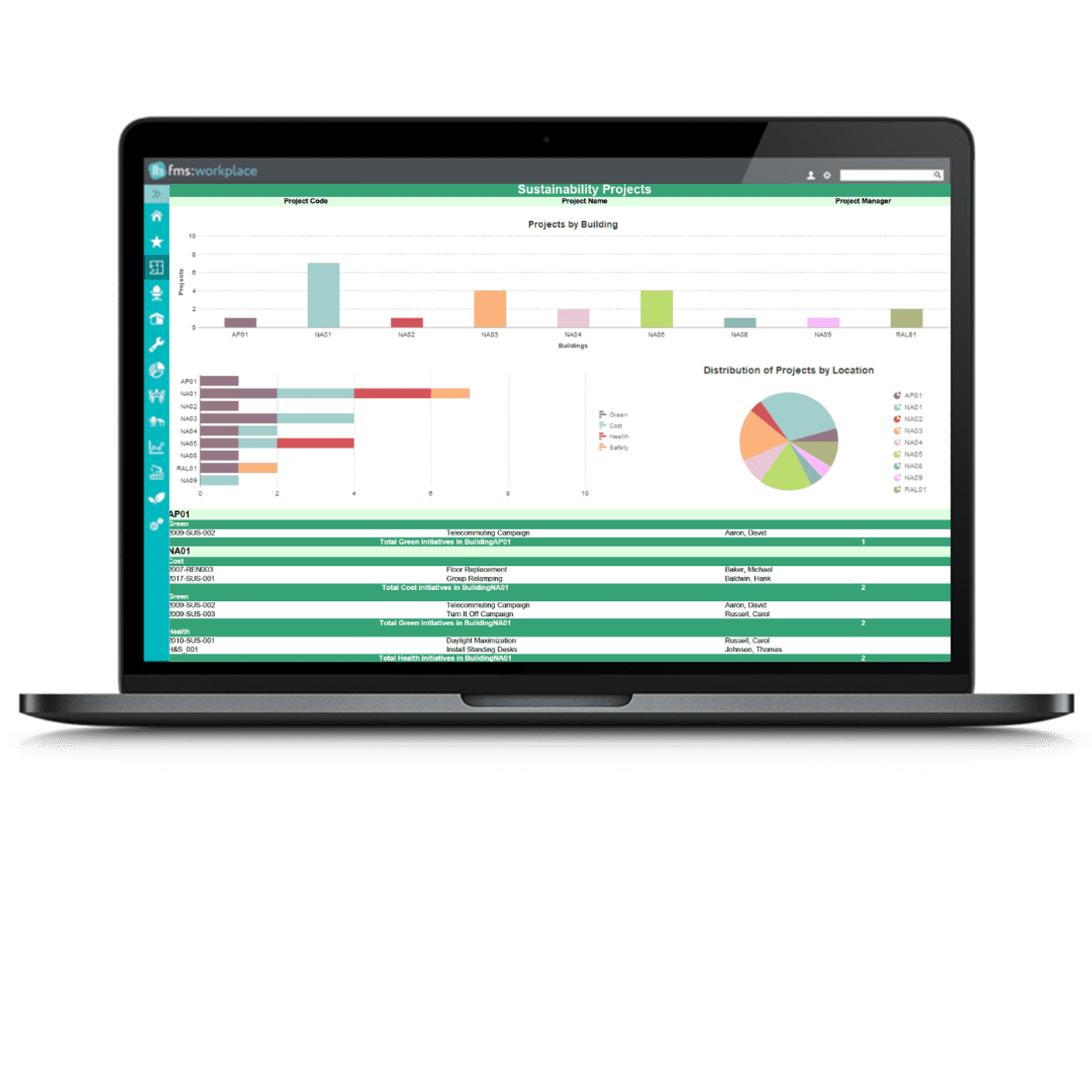The Client
The University of Nottingham is a public research University in Nottingham, England, founded in 1881 and granted a royal charter in 1948. Approximately 38,000 undergraduate and postgraduate students attend classes in Nottingham, with about 10,000 more global students who attend online. As the fifth-largest higher education (HE) estate in the United Kingdom, real estate and space management is critical to the University’s operational success and has a large impact on the budget.
The Challenge
Along with the entire HE sector, the University of Nottingham faced two important space management challenges over the last several years. First, the overall prospective student population is slowly declining, due to generational demographic shifts and recent changes to U.K. visa rules that make it harder to bring in foreign students. Second, the COVID-19 pandemic shifted how faculty use the workplace, thereby changing utilization trends for many campus spaces.
The University’s Space Management team is charged with ensuring the large estate is properly managed and space is optimized for utility and efficiency. Ade Mawdsley, Space Resource and Program Manager, has 32 years of experience in the space management profession across a variety of industries. He joined the University of Nottingham in 2015 and the team of three has a combined experience of 55 years in Space Management.

The team needs fresh, meaningful workplace data to meet its objectives. So, one of Mawdsley’s first priorities was evaluating space management solutions to replace an outdated BIS system.
“I Inherited a legacy Building Information System. When I first started, I said ‘I need some data from it.’ And they said ‘The guy who can get the data from this SQL database is on holiday’…Eventually, two weeks later, this CSV file came on a memory stick,” he recalled, “So in 2017, we tendered for a space management solution.”
We’ve got some real challenges in the UK. The UK Higher Education sector had no government support during COVID. The restrictions on recruiting students from abroad is another hit on our income streams. We are in a marketplace where every business plan for every university shows increasing the headcount by 10%. We can’t all increase by that.
Ade Mawdsley, Space Resource and Program Manager, University of Nottingham
The Solution
University of Nottingham selected FM:Systems as their space management partner. In 2018, the University implemented FMS:Workplace, a comprehensive, cloud-based Integrated Workplace Management System (IWMS) platform. FMS:Workplace centralizes all facility and asset data, serving as a single source of truth for managing workplace data and visualizing space and facilities. Later the University added workplace sensors to gain better visibility into patterns of workplace utilization.

Becoming Data-Driven with Workplace Sensors
With large operational expenses, HE institutions need to be laser-focused on costs and strategic plans. Although every higher education establishment is trying to expand, this is not a realistic goal for many institutions.
According to Mawdsley, the HE sector sometimes makes emotive decisions when it lacks solid data. Data and insights from FMS:Workplace and new workplace sensors will empower University of Nottingham leaders to make more data-driven workplace decisions.
The Space Management team knew workplace utilization had dramatically changed due to the COVID-19 pandemic. Before making changes to the real estate portfolio, the team needed to measure exactly what had changed and formulate a long-term strategy.
Workplace sensors provide important data about the usage of desks, meeting rooms, and offices, revealing important patterns of occupancy. Environmental sensors help monitor key workplace and sustainability data such as temperature, humidity, and air quality.
“We’ve got 700 desk sensors. Three hundred of those are roaming. We drop those down for four-month periods,” explained Mawdsley. “At the moment, my guys have just brought a batch in, and they are reconfiguring the hosts. They’ll go back out next week across a bunch of schools and professional services departments for four months. So, we’re gradually building up this picture of what space usage looks like for offices.”
We’ve still got pretty much the same footprint as pre-Covid for offices. If we take out the non-usable space, 37% of our usable footprint is offices. It’s the low-hanging fruit for us. It’s the one thing we know we can hit very, very quickly. And the only way we’ve done that is with the sensors
Ade Mawdsley, Space Resource and Program Manager, University of Nottingham

Better Understanding Office Utilization
The sensor data has revealed important trends in office utilization at the University, now that many faculty and administrative teams have adopted hybrid work. Individual teams have specific on-campus days.
Most teams and individuals prefer to come to campus on Tuesday, Wednesday, and Thursday. There are often not enough meeting rooms on those days. But on Mondays and Fridays, much of the office space and desks go unused.
As they identify trends, Mawdsley and his team plan to reconfigure space to better match needs. For example, they discovered locations near operational hubs have much higher occupancy on hot desks than the drop-in desks. Consequently, they are considering changes to the layout or allocation of desks.
“Most of the hubs have 65% bookable and 35% hotdesks. What we’re looking at is whether flipping that around in the operational hubs would be better, because people just want to come and go as they need to,” said Mawdsley.
Fridays have the lowest utilization of all. On average on a Friday, we are opening 75,000 square feet across 13 buildings for circa 200 people. That’s 375 square feet per person. That really, really does hurt when we’re sitting there with budget reductions. It costs £25k per annum in operating costs for just these three locations…10% of our entire estate footprint is office space, and from the work we’ve done over the last 18 months, it doesn’t matter how the space is allocated, the fact is on a Friday, 10% of our estate is empty.
Ade Mawdsley, Space Resource and Program Manager, University of Nottingham
Improving Sustainability and Saving on Energy Costs
Nottingham aspires to be the U.K.’s greenest city. It has more per capita cycling routes than London and an electric tram network. The city aims to be Net Zero in carbon by 2040. The University of Nottingham is an important partner in this goal and routinely wins awards for being a green higher education facility.
Closing unused office space reduces costs and carbon footprint. The Space Management team supports the University of Nottingham’s sustainability goals by identifying areas that can be closed during low-occupancy hours, reducing the environmental impact of lighting and HVAC.

The big number for us is 35,000 square feet of office space that we could close on a Friday, without any impact on service levels. The card readers can be turned off, so spaces won’t be accessible. On Thursday night, we could switch off all the lights. We’ll turn the heating and HVAC off from four o’clock on Thursdays. And that whole thing stays off completely then until Monday…Just by doing that, we’d be taking out 25% of the operating use of services for that area, and that’s going towards our bigger picture of sustainability.
Ade Mawdsley, Space Resource and Program Manager, University of Nottingham
Strategic Reductions to the Operating Footprint
Another 80,000 square feet have been flagged as potentially available for closure. In this second block of space, the entire buildings cannot be turned off—only portions of each building. To achieve savings, the Space Management team is investigating several possibilities, for example whether moving functions within these buildings would allow for the top floors have services including HVAC, lights, and maintenance turned off from Thursday to Monday. This has the potential to save £32,000 every year in maintenance costs alone.

Driving Behavioral Change for Long-Term Success
With their desire to reduce the university’s operating footprint, Mawdsley knows estate management will need to be more spatially dynamic. However, the workforce must also adjust some behaviors to help the University achieve space and sustainability goals.
For example, Mawdsley noted that teams often reserve a block of desks and meeting rooms. Then, they spend most of the day in the meeting rooms, leaving the desks empty yet locked out for reservations and unavailable to others.
“Where hot desks are very prominent, we’ve seen instances where someone has two rucksacks. They have one that’s empty and stays overnight on their favorite desk and they take the laptop home in the other. Then when they come in the next morning, they’ve got their favorite desk,” he said. Additionally, the environmental sensors have identified individuals placing heaters under their desks, violating workplace policy.
To counter behaviors like these, the workplace management team is undertaking a high-visibility communications project to promote better ways of working.
Furthering long-term success, the University is setting up a strategic program called “Reshaping Our Estate.” This will be a board-sponsored review of space standards, working patterns, and pedagogy “to transform the University’s estate into one that is more efficient, more environmentally and financially sustainable.” This initiative will rely heavily on the data collected by the Space Management team, including space management insights and sensor collection data delivered by FMS:Workplace.
Without a question, we couldn’t have got to where we are now without FM:Systems. Not just the hardware, but their teams as well… We started with 50 sensors in a short-term trial. And we’re up to nearly 800 workspaces being monitored. We’ve taken this on with our existing team. We really couldn’t do it without them.
Ade Mawdsley, Space Resource and Program Manager, University of Nottingham
A Collaborative Approach to Data-Driven Design
We are excited to highlight the collaborative efforts currently underway across teams that are enhancing our workspace strategy. For instance, the insights gained from sensor data are directly informing changes to layouts and furniture within existing Professional Service Hubs, which the workplace management team is orchestrating.
Additionally, our ability to deploy sensors for short-term monitoring has proven invaluable in supporting the development team on several strategic projects. This shift has transformed the role of data from a nice-to-have crosscheck to an integral component of major capital projects.
We are also partnering with the Agile Working team to create space allocation matrices that focus on function and workstyle, moving away from the traditional approach of allocating a set square footage per person based solely on grade. This new methodology considers the unique roles and workstyles of our team members, fostering a more efficient and adaptable work environment.




